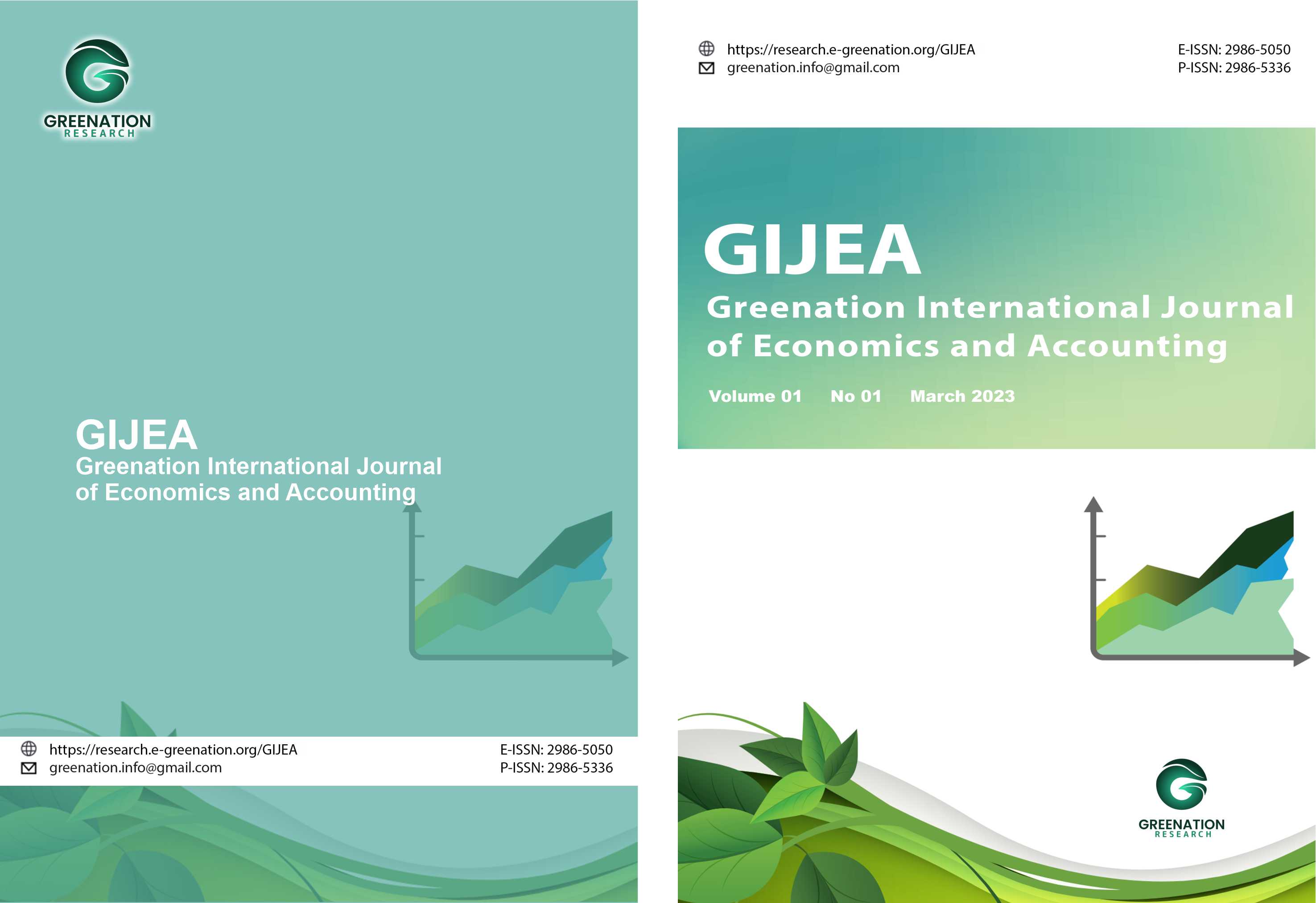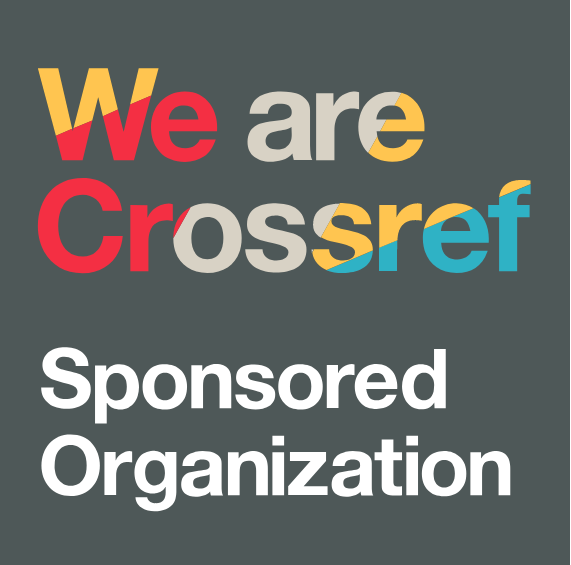Strategy to Increasing Country's Economic Growth With a Bonded Zone Logistic Center and Free Trade
DOI:
https://doi.org/10.38035/gijea.v2i2.204Keywords:
Economic Growth, Logistics Efficiency, Government Regulations and Policies, Logistic InfrastructureAbstract
Articles can make a significant contribution to the economic literature and public policy, as well as provide practical guidance for policymakers and stakeholders in their efforts to improve economic growth through logistics and free trade strategies. The research method applied in this scientific article is a structured literature review. Relevant scientific articles are selected, identified, and evaluated during the literature review process. The determination of the scope of the study was carried out using the PICO (population/problem, intervention, comparison) framework, which provides a score to set the study limits. A collection of relevant scientific articles is selected, identified, and reviewed during a literature review. The results of this article state that existing logistics infrastructure plays an important role in improving logistics performance, which ultimately has an impact on increasing sea trade and higher economic growth. Cooperation with customs and excise authorities in the supply chain also increases trade opportunities and supports environmental sustainability by reducing carbon emissions through reduced waiting times and queues. The use of green energy sources and green practices in logistics operations not only reduces negative environmental and social impacts, but also improves financial performance through increased GDP per capita, trade openness, and greater global export opportunities.
References
Adedoyin, F. F. et al. (2020) ‘Modelling coal rent, economic growth and CO2 emissions: does regulatory quality matter in BRICS economies?’, Science of the Total Environment. Elsevier, 710, p. 136284.
Afonichkina, E. et al. (2020) ‘Approaches to Assess the Impact of Global Trends of International Logistics Companies’ Activities’, IOP Conference Series: Earth and Environmental Science, 434.
Ahmed, Z. et al. (2022) ‘Economic growth, renewable energy consumption, and ecological footprint: Exploring the role of environmental regulations and democracy in sustainable development’, Sustainable Development. Wiley Online Library, 30(4), pp. 595–605.
Aprilani, T. L. A., Yuliarmi, Y. and Marhaeni, A. (2021) ‘The Role of The Government in Development of Community-Based Tourism on Economic Growth Inclusivity’, Journal of The Community Development in Asia, 4(1), pp. 96–105. doi: 10.32535/jcda.v4i1.1002.
Arceanis, A. (2023) ‘Payment of import and export duties in the Republic of Moldova: analysis of customs statistics’, Culegere de lucrari stiintifice: Simpozion stiintific al tinerilor cercetatori, vol 2.
Ardiansyah (2022) ‘Utilization of Customs Regulations Related to Import Export Insurance in Supporting the Export Process’, Jurnal Abdimas Peradaban.
Aziz, I. N., Widodo, D. S. and Subagja, I. K. (2021) ‘Effect of Training and HR Development on Employee Performance with Motivation as an Intervening Variable in PT. Rekasis Gigatama’, Global Journal of Engineering and Technology Advances. Global Journal of Engineering and Technology Advances, 6(2), pp. 169–181.
Balázs, G., Mészáros, Z. G. and Péterfi, C. A. (2022) ‘Process measurement and analysis in a retail chain to improve reverse logistics efficiency’, Operational Research in Engineering Sciences: Theory and Applications, 5(2), pp. 152–175.
Blyde, J. and Molina, D. (2015) ‘Logistic infrastructure and the international location of fragmented production’, Journal of International Economics. Elsevier, 95(2), pp. 319–332.
Borucka, A. and Grzelak, M. (2019) ‘Application of logistic regression for production machinery effciency evaluation’, Applied Sciences (Switzerland), 9(22). doi: 10.3390/app9224770.
Ducman, A. A. et al. (2023) ‘Government Oversight and Economic Impacts: Sustainability in the Vineyard and the Evolution of Wine Regulations, Trade and Production’, Agronomy, 13(12). doi: 10.3390/agronomy13122991.
Elia, V., Gnoni, M. G. and Tornese, F. (2018) ‘Improving logistic efficiency of WEEE collection through dynamic scheduling using simulation modeling’, Waste management. Elsevier, 72, pp. 78–86.
Greene, M. and Tsai, C. (2008) ‘Enhancing Market Openness through Regulatory Reform in the People’s Republic of China’, in.
Harkim (2020) ‘MICRO, SMALL AND MEDIUM ENTERPRISES IN THE ERA OF DIGITAL ECONOMY - LESS CONTACT’, in.
Hysa, E. et al. (2020) ‘Circular economy innovation and environmental sustainability impact on economic growth: An integrated model for sustainable development’, Sustainability. MDPI, 12(12), p. 4831.
Karaschuk, O. (2020) ‘Bonded warehouses: modern infrastructure for trading agricultural products’, in.
Khadim, Z. et al. (2021) ‘Mapping the Moderating Role of Logistics Performance of Logistics Infrastructure on Economic Growth in Developing Countries’, Economies.
Khan, S. A. R. et al. (2019) ‘Environmental, social and economic growth indicators spur logistics performance: from the perspective of South Asian Association for Regional Cooperation countries’, Journal of cleaner production. Elsevier, 214, pp. 1011–1023.
Kuznietsova, N. and Babych, O. S. (2020) ‘SPECIAL ECONOMIC ZONES AS A MECHANISM FOR ATTRACTION OF FDI IN CHINA’, in.
Liu, J., Zhao, M. and Wang, Y. (2020) ‘Impacts of government subsidies and environmental regulations on green process innovation: A nonlinear approach’, Technology in Society. Elsevier, 63, p. 101417.
Munim, Z. H. and Schramm, H.-J. (2018) ‘The impacts of port infrastructure and logistics performance on economic growth: the mediating role of seaborne trade’, Journal of Shipping and Trade. Springer, 3(1), pp. 1–19.
Murshed, M. et al. (2021) ‘The nexus between environmental regulations, economic growth, and environmental sustainability: linking environmental patents to ecological footprint reduction in South Asia’, Environmental Science and Pollution Research. Springer, 28(36), pp. 49967–49988.
Nechaev, A., Skorobogatova, Y. and Nechaeva, M. (2021) ‘Toolkit for the transportation and logistics infrastructure’, Transportation Research Procedia. Elsevier, 54, pp. 637–644.
Nguyen, H. Q. and Tien, D. N. (2020) ‘SPECIAL ECONOMIC ZONES AND FDI ATTRACTION TO DISTRICTS IN VIETNAM: A NON-PARAMETRIC APPROACH’, The Singapore Economic Review.
Noll, R. G. (2021) Regulatory policy and the social sciences. University of California Press.
Ouyang, X. et al. (2019) ‘Environmental regulation, economic growth and air pollution: Panel threshold analysis for OECD countries’, Science of the total environment. Elsevier, 657, pp. 234–241.
Parianom, R., Desmintari and Utami, K. (2024) ‘An Examination of the Logistics Infrastructure’s Impact on the Economic Growth of ASEAN’, KnE Social Sciences.
Sheng-ch, W. (2015) ‘Remanufacturing Logistics Network Design Considering Infrastructure Integration in FTZ’, Science and Technology Management Research.
Silitonga, P. E. S., Widodo, D. S. and Ali, H. (2017) ‘Analysis of the effect of organizational commitment on organizational performance in mediation of job satisfaction (Study on Bekasi City Government)’, International Journal of Economic Research.
Simonovi?, A. and Kosti?, D. (2023) ‘Symbiosis of intermodal terminals and free zones’, Serbian Journal of Management.
Song, Y., Zhang, X. and Zhang, M. (2021) ‘The influence of environmental regulation on industrial structure upgrading: Based on the strategic interaction behavior of environmental regulation among local governments’, Technological Forecasting and Social Change. Elsevier, 170, p. 120930.
Srinivas, J., Das, A. K. and Kumar, N. (2019) ‘Government regulations in cyber security: Framework, standards and recommendations’, Future generation computer systems. Elsevier, 92, pp. 178–188.
Terbish, M. and Floro, M. S. (2016) ‘How does public infrastructure (or lack thereof) affect time use in Mongolia’, Asia-Pacific Population Journal, 31, pp. 43–62.
Usmany, A. E. M. (2024) ‘Impact of Government Regulations on Small Business Performance: A Comparative Study’, International Journal of Business, Law, and Education.
Villafradez, R. A. C. and la Peña Cárdenas, N. De (2020) ‘Analysis of Transport Infrastructure Development and Competitiveness in the Member Countries of Pacific Alliance (2007-2016)’, Revista Finanzas y Política Económica.
Wang, C. et al. (2020) ‘Railway and road infrastructure in the Belt and Road Initiative countries: Estimating the impact of transport infrastructure on economic growth’, Transportation Research Part A: Policy and Practice. Elsevier, 134, pp. 288–307.
Wang, H. (2019) ‘More efficient estimation for logistic regression with optimal subsamples’, Journal of machine learning research, 20(132), pp. 1–59.
Widodo, D. S. (2017) ‘The influence of organizational culture, leadership, and compensation through work motivation on employee performance’, Jurnal Manajemen Motivasi, 13(2), pp. 896–908.
Widodo, D. S. (2020) ‘Manajemen Kinerja’, Pdf. Cipta Media Nusantara.
Widodo, D. S. (2021) ‘Influence of managerial performance: work motivation, leadership style and work experience (literature review study)’, Dinasti International Journal of Digital Business Management, 2(6), pp. 1079–1089.
Widodo, D. S. and Silitonga, P. E. S. (2017) ‘Company Performance Analysis: Leadership Style, Corporate Culture and Human Resource Development’, International Review of Management and Marketing, 7(4), pp. 34–41.
Wong, W. P. et al. (2015) ‘Logistics firms performance: efficiency and effectiveness perspectives’, International Journal of Productivity and Performance Management. Emerald Group Publishing Limited, 64(5), pp. 686–701.
Yingfei, Y. et al. (2022) ‘Green logistics performance and infrastructure on service trade and environment-measuring firm’s performance and service quality’, Journal of King Saud University-Science. Elsevier, 34(1), p. 101683.
Zainal, V. R., Widodo, D. S. and Subagja, I. K. (2019) ‘Indonesia Islamic Banking Readiness in Facing the ASEAN Economic Community, in Terms of Islamic Banking Disclosure and Performance Indices’, Journal of Economics and Management Sciences, 2(2), pp. p25–p25.
Zakiy, M. (2018) ‘The Barrier and Strategy of Higher Education in Developing Human Resources’, in.
Downloads
Published
How to Cite
Issue
Section
License
Copyright (c) 2024 Sri Yanthy Yosepha, Agus Suhendra, Christophorus Indra Wahyu Putra, Kamsariaty Kamsariaty, Denny Mahendra

This work is licensed under a Creative Commons Attribution 4.0 International License.
Copyright :
Authors who publish their manuscripts in this journal agree to the following conditions:
- Copyright in each article belongs to the author.
- The author acknowledges that the GIJEA has the right to be the first to publish under a Creative Commons Attribution 4.0 International license (Attribution 4.0 International CC BY 4.0).
- Authors can submit articles separately, arrange the non-exclusive distribution of manuscripts that have been published in this journal to other versions (for example, sent to the author's institutional repository, publication in a book, etc.), by acknowledging that the manuscript has been published for the first time at GIJEA.

























